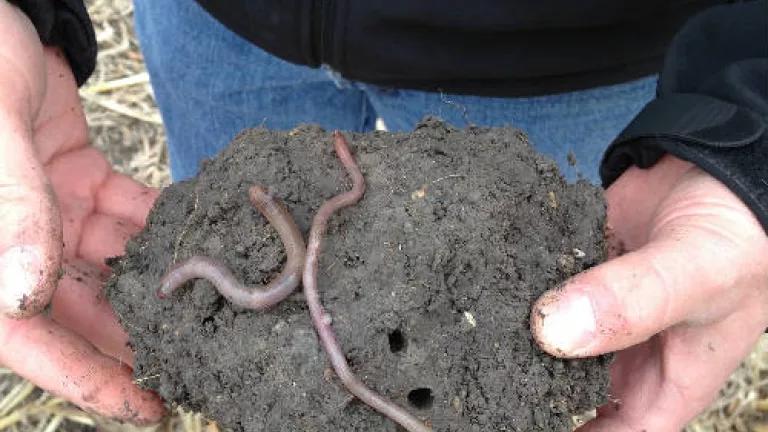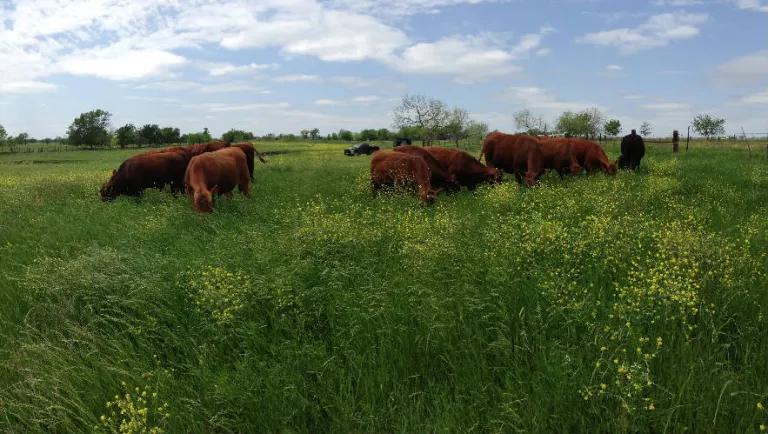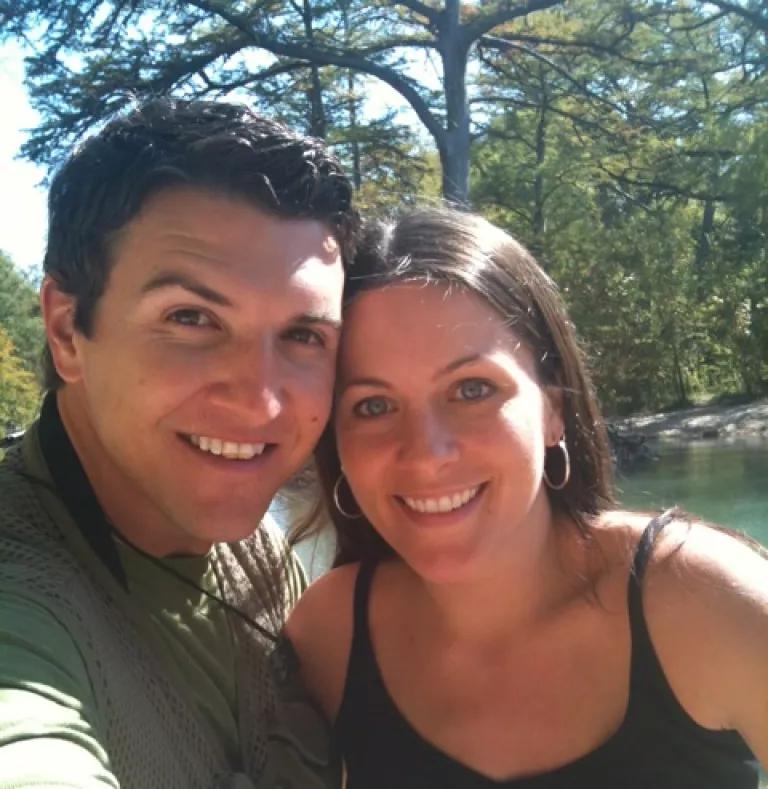
This post is a guest blog written by Jonathan and Kaylyn Cobb, who farm in Rogers, Texas. You can hear more from Jonathan at the Southern Soil Health Conference (an event NRDC is helping to sponsor) in Fort Worth on January 13 and 14. If you can't make it to Fort Worth, follow @NRDCFood and @NRDCWater for updates.
My family has farmed in Central Texas for four generations. My great-grandfather was a sharecropper on land that my grandfather was eventually able to purchase. My father has farmed this same land his entire life, and I had the opportunity to move back and join him in 2007 after being away for over a decade.
After about four years of being back (three of which were some of the worst financial years since my dad has been farming), I thought I was going to have to give up the farm and end over a century of my family farming this land. Financially, we weren't going to be able to make it work the way we were doing things... large acreage, growing commodity crops. It was probably the most difficult conversation I've ever had to have when I told my dad that there wouldn't be anyone able to keep the farm going once he retired.
But thankfully, after hearing about ways to regenerate the health of the soil, I realized that our dream of staying on the farm could be possible. We could get out of the downward spiral of continuing to add more and more expensive inputs (which increase each year) just to grow commodity crops at prices that often created scenarios where it was next to impossible just to break even. It's been a complete paradigm shift.
We never could have guessed how big that shift would be. Through great mentors, lots of reading and learning opportunities, we began to learn about soil health. We began to view the soil as living, not just a medium for plants. Our goal now is to promote life and we quit fighting against nature. And once we stopped fighting it, nature has started working for us. The life in the soil is essential. We have billions of creatures working for us in the soil every day. Increased levels of microbes improve soil structure, which reduces erosion and enables more water to infiltrate the soil. Higher soil carbon levels mean we can hold that water in the soil to withstand droughts. (Every 1% increase in soil carbon equals approximately 20,000 gallons of water storage per acre!) Higher carbon levels also enable us to hold onto the nutrients that are naturally in the soil. This addition of carbon also means there is less carbon in the atmosphere.
As we began to think about promoting life, it caused us to think about human life and wanting to become producers of nutrient-dense food. We began to see that it is all inter-related. Healthy soil produces healthy plants and animals, which produce healthy food for people. Due to our dead soils, the "food" we were previously harvesting provided very little in nutrition. But once we began to get life back into the soil, we have stronger and healthier plants. Our friends the microbes are hard at work again and enable nutrient cycling that feeds the plant what it needs to thrive. They provide micronutrients from the soil that are poorly missing from the majority of our food today. Improving soil health is imperative to improving human health.
Going into our fourth year as regenerative farmers, we are seeing so many amazing things happen. From the countless numbers of diverse insects, numerous new bird species and the return of some native bird species, to plants native to our prairies that have shown back up without being planted. Our soil carbon levels are increasing faster than we ever thought possible.

We still have a long way to go and much to learn, but the journey toward healthy soil has saved our farm. Healthy soil is our insurance. It is resilient and once it heals, it is regenerative. It doesn't require costly inputs to thrive, and the inputs we use (such as livestock that cycle fertility and many other benefits) can be sold for a profit, unlike the other inputs we used in our old methods that were just a huge expense. The benefits to healthy soil we've mentioned are just the tip of the iceberg. There are so many other tangible benefits to improving soil health (economically, ecologically, etc.).

Last but not least, there is something about regenerating the soil and promoting life that is difficult to put into words. Knowing that we are improving the land for future generations, creating environments in which insects and animals (and people!) can thrive, working collectively with creation... it's freeing. It feels right. It's difficult work and there are certainly many tough days, but we feel a purpose in this work that keeps us going in spite of the difficulties.
We are excited each day about this new direction, and look forward to the future on the farm in ways we never did before.

Thanks, Jonathan and Kaylyn for sharing your story!
